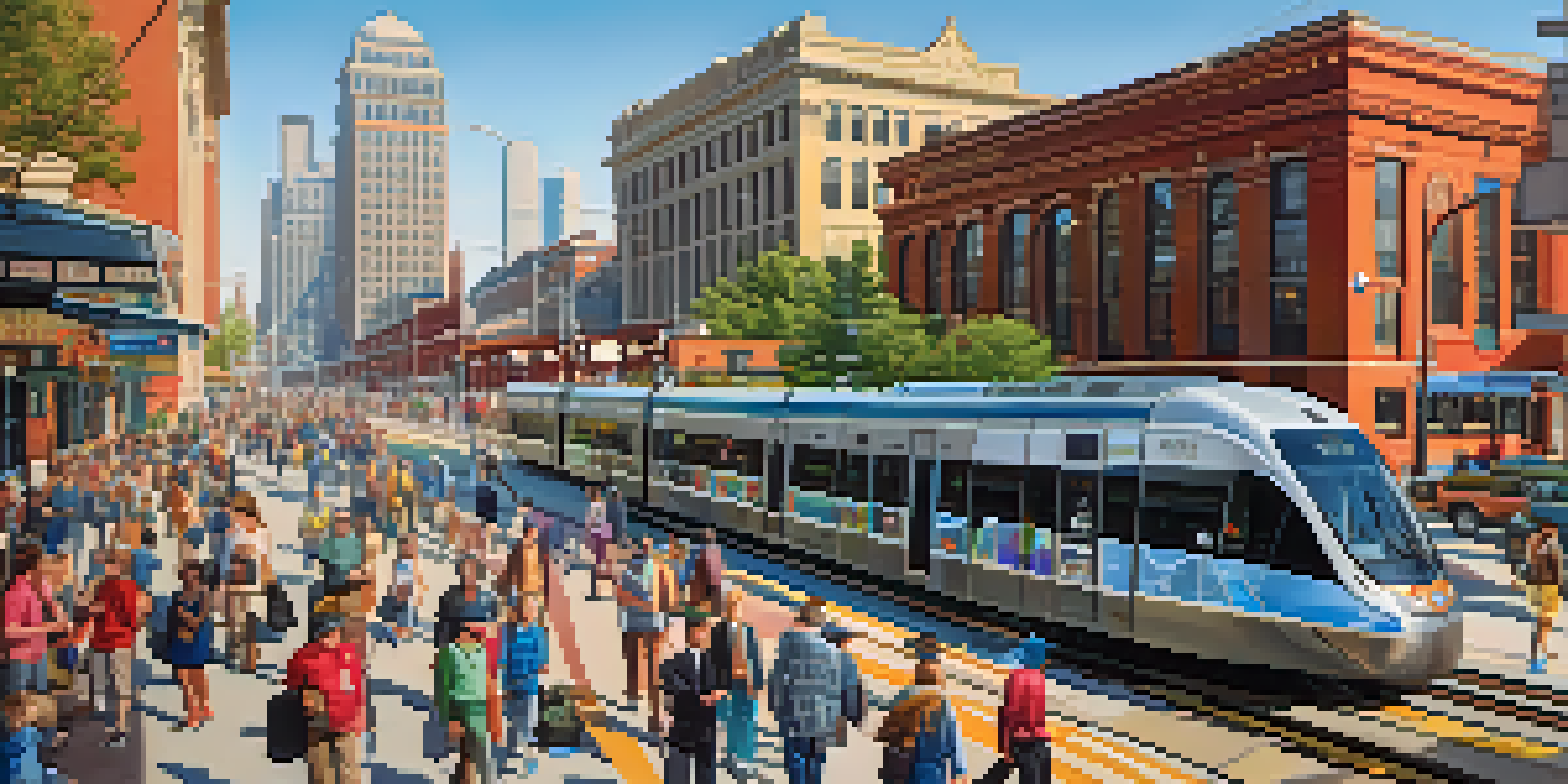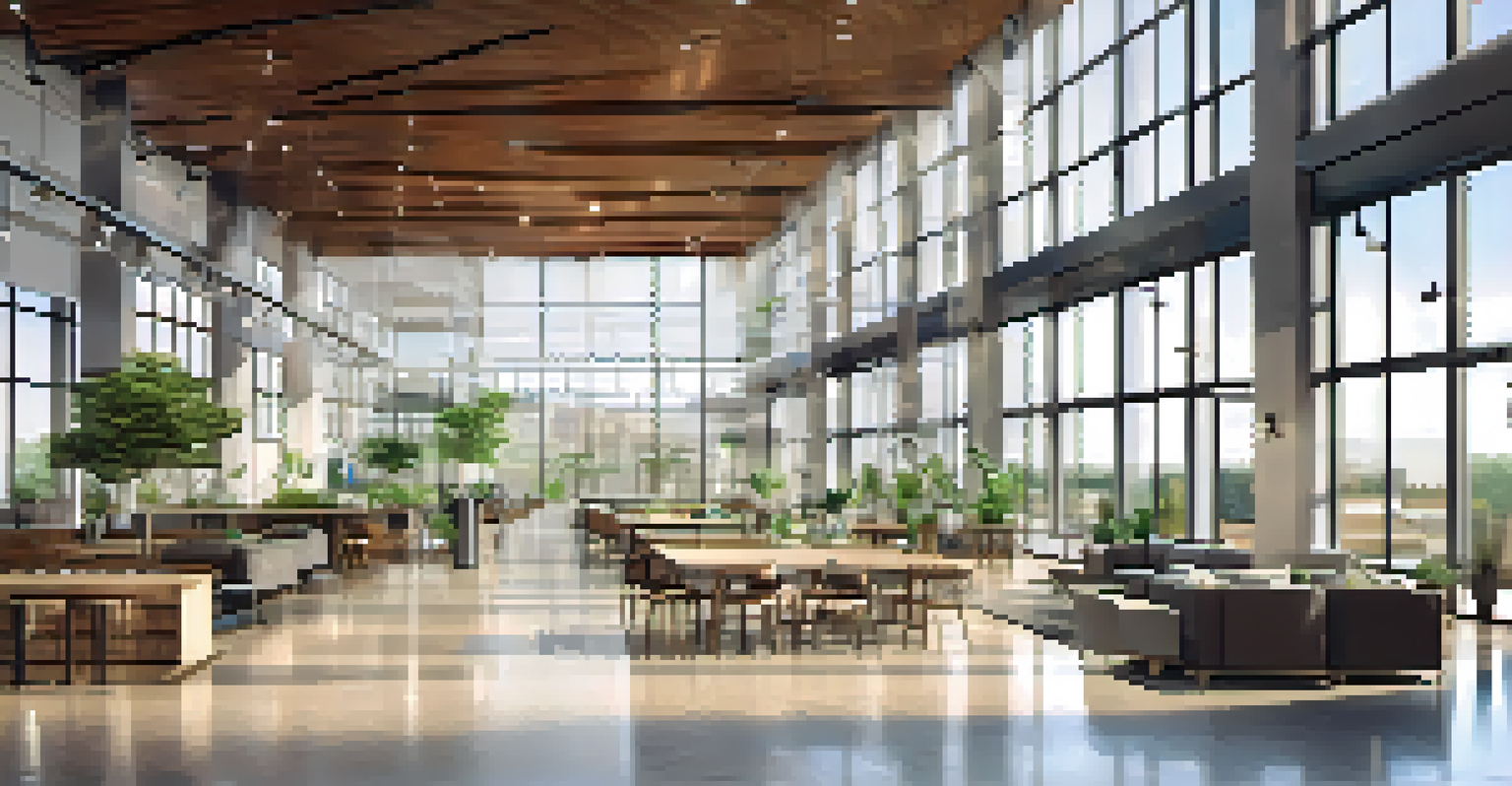Future of St. Louis Infrastructure: Trends and Developments

Emerging Technologies Shaping St. Louis Infrastructure
As we look to the future, technology is at the forefront of transforming infrastructure in St. Louis. Smart sensors, for instance, are being integrated into city systems, allowing for real-time monitoring of everything from traffic flow to air quality. This data-driven approach not only enhances efficiency but also aids in decision-making processes for city planners.
The greatest threat to our planet is the belief that someone else will save it.
The potential for autonomous vehicles is another exciting development. With the rise of self-driving technology, St. Louis could see a significant shift in transportation patterns, reducing congestion and improving safety. Imagine a future where commuters can relax in a vehicle that navigates through the city with ease!
Moreover, advancements in renewable energy technologies are being harnessed to create more sustainable infrastructure. Solar panels and wind turbines are becoming common sights, pushing St. Louis toward a greener future. These technologies not only help reduce the city's carbon footprint but also promote energy independence.
Revitalizing Public Transportation for Greater Accessibility
Public transportation in St. Louis is undergoing a major revitalization, with significant investments aimed at improving accessibility and efficiency. The goal is to create a seamless transit system that connects neighborhoods and reduces reliance on personal vehicles. This is particularly vital for low-income residents who depend on public transport to access jobs and services.

Recent developments include the expansion of light rail services and the introduction of more reliable bus routes. By modernizing these systems, city officials hope to attract more riders and ease the burden of traffic congestion. It's all about creating a transit experience that is efficient, safe, and user-friendly.
Smart Tech Enhances St. Louis Infrastructure
The integration of smart sensors and autonomous vehicles is transforming urban management and transportation efficiency in St. Louis.
Additionally, there’s a push for integrating technology into public transportation. Mobile apps for real-time tracking of buses and trains are becoming standard. This not only enhances user experience but also encourages more people to use public transport, thus contributing to a cleaner environment.
Green Infrastructure Initiatives for Urban Resilience
Green infrastructure is gaining traction in St. Louis as a means to combat urban flooding and enhance environmental quality. This approach utilizes natural systems—like parks, green roofs, and permeable pavements—to manage stormwater effectively. Such initiatives not only mitigate flooding risks but also improve the city's aesthetics and wildlife habitats.
Infrastructure is the backbone of our society, and we must invest in it to ensure a sustainable future.
For instance, the implementation of rain gardens in neighborhoods has proven effective in managing runoff while providing beautiful green spaces. These gardens absorb rainwater, reducing the burden on drainage systems. They also serve as community gathering spots, fostering social connections among residents.
Moreover, the city is actively promoting urban forestry programs to increase tree canopies. Trees play a crucial role in reducing heat islands and improving air quality. By investing in green infrastructure, St. Louis is not just addressing immediate environmental concerns but also building a resilient urban ecosystem for the future.
Investing in Smart Buildings and Energy Efficiency
The future of St. Louis infrastructure also hinges on smart buildings designed for energy efficiency. These structures utilize advanced technologies to optimize energy use, which not only lowers costs but also minimizes environmental impact. For example, buildings equipped with smart thermostats can adjust heating and cooling based on occupancy and weather, leading to significant energy savings.
In addition to lowering energy consumption, these smart buildings often feature sustainable materials in their construction. This shift not only enhances durability but also supports local economies by sourcing materials regionally. It’s a win-win situation for both the environment and the community.
Public Transit Revitalization Efforts
Investments in public transportation are aimed at improving accessibility and reducing reliance on personal vehicles, benefiting all residents.
As businesses and residents become more energy-conscious, the demand for such smart buildings is likely to rise. St. Louis is poised to become a leader in this trend, showcasing innovative designs that prioritize sustainability while enhancing the quality of life for its residents.
The Role of Community Engagement in Infrastructure Planning
Community engagement is becoming an essential component of infrastructure development in St. Louis. Local residents are being invited to share their input and ideas, ensuring that projects meet the needs of the community. This collaborative approach not only fosters a sense of ownership but also enhances the overall effectiveness of infrastructure initiatives.
Public forums and workshops have become common practices, allowing citizens to voice concerns and priorities. When planners consider the perspectives of those who will be directly affected, the resulting projects are often more sustainable and well-received. It’s about building infrastructure that reflects the community's values and aspirations.
Moreover, this engagement helps to educate residents about the importance of infrastructure projects. As people understand the benefits, they are more likely to support and participate in these initiatives. Ultimately, a well-informed community is a powerful ally in driving positive change.
Addressing Equity in Infrastructure Development
Equity in infrastructure development is a critical issue that St. Louis is actively addressing. Historically, certain neighborhoods have been overlooked or underfunded, leading to disparities in access to essential services. Moving forward, the city is committed to ensuring that all residents, regardless of their background, benefit from infrastructure enhancements.
This commitment includes prioritizing projects in underserved areas, where infrastructure improvements can have the most significant impact. By focusing on these communities, St. Louis is taking steps toward rectifying historical inequities and fostering inclusive growth. It’s not just about building roads and bridges; it’s about building a stronger, more equitable community.
Focus on Equity in Development
St. Louis is prioritizing infrastructure improvements in underserved neighborhoods to ensure equitable access to essential services for all residents.
Additionally, partnerships with local organizations are being formed to ensure that the voices of marginalized groups are heard. This collaborative approach helps to create infrastructure that truly serves the needs of all residents, paving the way for a more just and connected St. Louis.
Funding Strategies for Future Infrastructure Projects
Funding is often a significant hurdle in implementing ambitious infrastructure projects. In St. Louis, innovative funding strategies are being explored to ensure that vital initiatives can move forward without financial constraints. This includes leveraging public-private partnerships, which can provide additional resources and expertise.
Grants and federal funding are also being sought to support infrastructure improvements. By tapping into available resources, the city can undertake larger projects that might have been previously deemed unfeasible. It's about being proactive in securing the financial backing needed to realize a vision for the future.

Moreover, community investment funds are gaining popularity, allowing residents to contribute directly to projects that matter to them. This grassroots approach not only fosters a sense of community but also empowers citizens to take an active role in shaping their environment. With multiple funding avenues, St. Louis is on a path toward sustainable development.